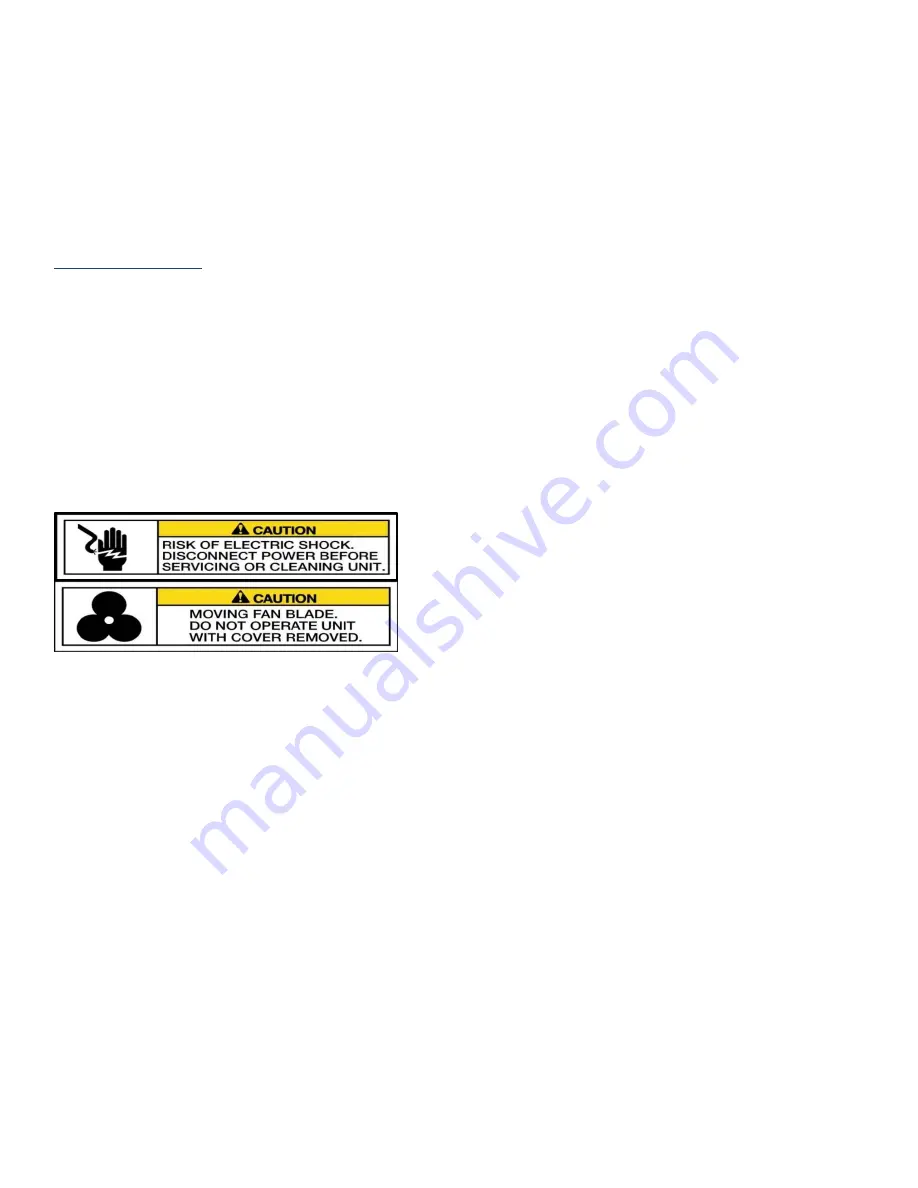
6
cold air throughout the cabinet which may result in
warm spots.
Condenser Fan Pressure Switch:
Some freezer units, to maintain proper system
operation, may be equiped with a pressure switch
that operates the condensing unit fan.
Maintenance
Note: Component parts shall only be replaced with
like components. Maintenance and repair of the
electrical and refrigeration systems should only be
done by trained and qualified personnel.
Disconnect power before performing service.
Certain models may contain multiple voltages.
Leer does not assume responsibility for any
damage to people or things deriving from violation,
improper use, or in any case not in compliance
with Leer’s instructions.
Cleaning the Freezer:
The freezer should be
cleaned annually. In corrosive environments such
as coastal regions and areas where deicing
chemicals and road salts are used, more frequent
cleaning is recommended.
The exterior of the freezer can typically be cleaned
with the use of detergents dilluted in warm water
followed with a tap water rinse. The exterior paint is
capable of withstanding the use of polishing
compounds and most solvents. If using stronger
cleaning agents, they should be tested on a small,
inconspicuous areas prior to application onto visible
surfaces of the freezer. If cleaning the interior of the
freezer, the use of detergents with strong odors (i.e.
citrus based cleaners), abrasive cleaners containing
chlorine bleach, and any form of solvent based
cleaners are not reccommended. They may leave
objectionable odors inside the cabinet which may be
absorbed by the ice being stored in the freezer.
Cleaning Door Gaskets:
Door gaskets may
mildew and stiffen over time. The gasket is made of
a soft, flexible rubber-like material that can be
cleaned using most kitchen and bath cleaners
designed for mildew removal. Review manufacturer
information and instructions on any cleaning agent
prior to use to determine the cleaner’s compatability
with the surface being cleaned.
Cleaning Condenser Coils:
It is recommended to inspect and clean the
condenser coil and fan blades every 3 months.
There are a variety of methods available for
cleaning the condenser coils. Debris are being
drawn into the coil by the condenser fan and the
debris should be removed in the opposite direction.
•
The simplest and preferred method would
involve the use of a vacuum cleaner to suck the
debris out of the coil from the outside surface.
•
Another method is using compressed air to blow
dust from the coil. The debris should be blown
out from the inside surface of the coil.
WARNING
: When using compressed air, there
may be a cloud of dust released into the air
surrounding the machine.
It is recommended that the service person wear the
proper protective equipment (i.e. safety glasses and
a dust mask) when performing coil cleanings.
Note:
DO NOT use any type of filter media in front
of the condenser coil to trap dust. Filter testing has
proven to create enough restriction of
air flow to reduce the efficiency of the coil’s heat
exchange.
Defrosting the Freezer:
Auto-Defrost cabinet models are equipped to be
self-defrosting and are designed to automatically
enter defrost mode once every four hours. During
the defrost cycle, the power to the refrigeration
system will be automatically re-directed to the
defrost circuit. This will shut down power to the
condensing unit and evaporator fan motors and send
power to a heat element that is attached to the
surface of the evaporator coil. The heat generated
by the element will melt the ice build-up on the
evaporator coil and the resulting melt water will
drain through a tube out of the back wall of the
































